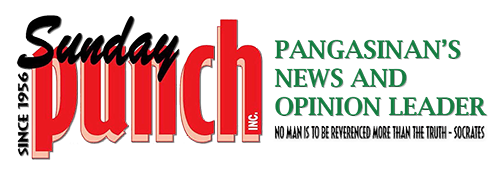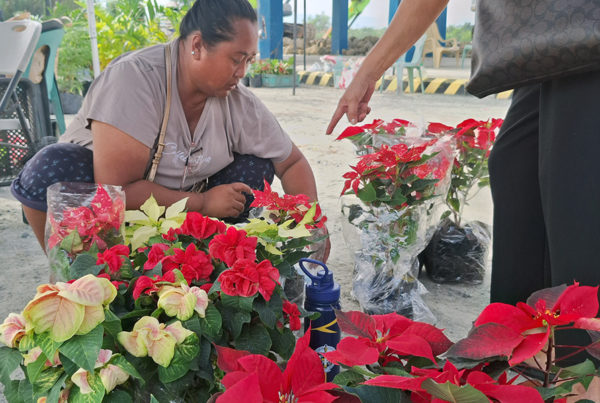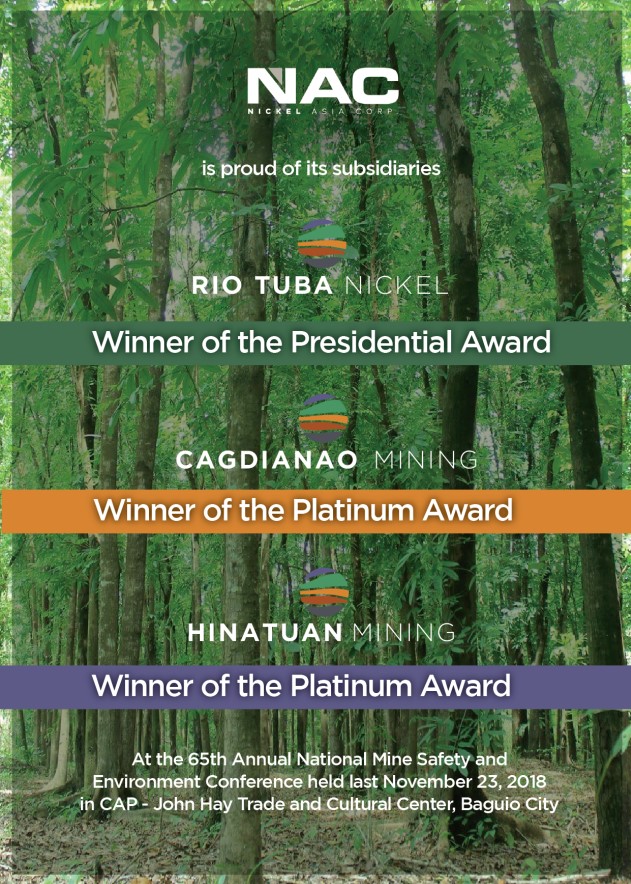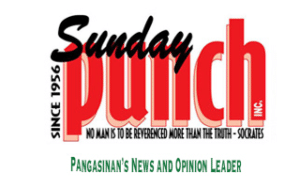New insights into the Lingayen Gulf landing
(A project of the Philippine Veterans Bank * Paintings by James Turnbull * Gift of Abbot Laboratories)
“While the Lingayen Landing was primarily an American effort, the Filipino guerrillas’ role and bravery cannot be denied in this particular stage of the war. Much like their brothers from all over the country, our war veterans of Pangasinan showed the world that the Filipino is capable of great heroism.” – PVB President & CEO Ricardo A. Balbido, Jr.

Supplies are Landed
James Turnbull #4
Oil on canvas, 1945
Gift of Abbott Laboratories
88-159-KE
African-American troops unloading an LCM (Landing Craft Mechanized). Supplies must come ashore in this manner until permanent docking facilities can be wrested from the enemy. It is backbreaking work at terrifically long hours and when the beach is under mortar or artillery fire can be very dangerous. The LCVP at the right was broached by the high waves and the coxswain is trying to get it righted before it is pounded to pieces.

Air Attack
James Turnbull #12
Watercolor, 1945
Gift of Abbott Laboratories
88-159-KM
LCVP’s are laying a smoke screen around the ships anchored in Lingayen Gulf. Bomber and kamikaze attacks usually came in the few minutes of twilight either before sunrise or after sunset (especially suicide attacks). The men are elated over the downing of an enemy plane by our ack- ack fire.

Airfield at Lingayen, Luzon
James Turnbull #5
Oil on canvas, 1945
Gift of Abbott Laboratories
88-159-KF
This Japanese air strip was put out of action by carrier aircraft several days before the landing in Lingayen Gulf, January 9, 1945. Piper Cub planes used for observation purposes landed on this strip shortly after our troops hit shore. Immediate repair made possible the landing of some fighter aircraft and in a matter of a few days the strip was covered with a metal runway, and P- 38’s, night fighters, PBY’s and C47’s were making this one of the most crowded air strips in the world. A road goes past one end of the strip from the beach and supplies were carried over it by “Ducks” (in left foreground) and other vehicles. The MP keeps traffic moving.

Ambulance Being Unloaded
James Turnbull #22
Gouache, 1945
Gift of Abbott Laboratories
88-159-KW
Ambulance unloading wounded onto the ramp of an LST. The men in the center foreground are attaching a net filled with supplies that have just been brought to shore to the hook of a “Cherry Picker,” an apparatus that is powered by a tractor. Once the load is picked up it can be moved wherever it is needed.

Amphibious Troop Movement
James Turnbull
Oil on canvas, 1945
67-109-B
Burdened with full combat packs, assault troops clamber down a landing net into the landing craft which will debark them on the shores of Lingayen Gulf to open the battle for Luzon.

River Traffic (Dagupan)
James Turnbull #20
Watercolor, 1945
Gift of Abbott Laboratories
88-159-KU
View of the river running through Dagupan, which is located about three miles inland from Lingayen Gulf. Shortly after our forces landed, an old dock was discovered here and Army engineers immediately set to work with pile drivers and equipment to make possible the unloading of LCM’s and LCT’s. Some of these landing craft were able to unload almost at once, which greatly facilitated supply landings.

Cubit to Their Stature
James Turnbull #18
Watercolor, 1945
Gift of Abbott Laboratories
88-159-KS
Lookouts maintain a constant watch atop an operations tower on Lingayen Gulf. Using glasses, they scan the horizon, augmenting radar and other mechanical devices with the human eye. In the foreground a wounded Filipino strides away from the first aid dressing station.

Lingayen Beachcombers
James Turnbull #16
Watercolor, 1945
Gift of Abbott Laboratories
88-159-KQ
Racing ashore along the length of White Beach, American infantrymen comb the objective clear of Japanese defenders as the U.S. launches the attack on Luzon on January 9, 1945. In the background the ungainly Navy LST’s (Landing Ships Tank) spew out their deadly cargoes of fighting men and machines.

Mercy Breasts the Tide
James Turnbull #14
Gouache,1945
Gift of Abbott Laboratories
88-159-KO
Churning through hub-deep waves, a tiny U.S. ambulance backs up to the open door of an LST hospital ship and surrenders its cargo of wounded men off Lingayen Gulf.

Philippine Foreclosure
James Turnbull #19
Gouache, 1945
Gift of Abbott Laboratories
88-159-KT
On January 9, 1945, American forces waded ashore and opened foreclosure proceedings on the short-term Japanese holdings on Luzon in the Philippines. Following an intensive Navy aerial and surface barrage, infantrymen push ashore from Navy landing craft in Lingayen Gulf.

Voice of Liberation
James Turnbull #13
Oil on canvas, 1945
Gift of Abbott Laboratories
88-159-KN
Via Shore Party radio, a Marine transmits information from Filipino guerrillas concerning the numbers and disposition of Japanese defenders of Luzon during the invasion of Lingayen on January 9, 1945. In the background a signalman semaphores a message to ships offshore.

The Emancipated
James Turnbull #10
Oil on canvas, 1945
Gift of Abbott Laboratories
88-159-KK
Natives from the Philippine town Binmaley hail the advancing liberators of Luzon with emotions held in check since the Japanese occupation. Infantrymen and amphtracs move through the battered village with no time to pause and accept the plaudits showered upon them by the freed men.

The Mortars Come Ashore
James Turnbull #11
Oil on canvas, 1945
Gift of Abbott Laboratories
88-159-KL
Members of a mortar platoon, lugging their heavy equipment, wade ashore through the surf from a Navy landing craft during the invasion of Lingayen on Luzon in January of 1945.

Unidentified Landing Scene
James Turnbull #2
Gouache, 1945
Gift of Abbott Laboratories
88-159-KC
Troops cluster at the rail of a ship over whose side they are about to descend. In the background a battleship is firing a salvo into the shore at Lingayen. Just to the left is seen an attack transport, a sister ship of the one from which the picture is made. In the middle foreground are some LCVP’s moving in a circle. This maneuver is performed until all the craft are assembled and are given the signal to move up to the line for the final dash in. The man in foreground holds a rope to steady an LCVP below.

Spirit of 1945
James Turnbull #29
Oil on canvas, 1945
Gift of Abbott Laboratories
88-159-LD
Filipino guerrilla waving an American flag while standing in the surf. This man was spotted by one of out observation planes waving a flag in the midst of our most concentrated pre-invasion bombardment a few minutes before H-Hour. He was attempting to signal our forces that the Japanese had retreated and that we would be able to land without bombardment. This was probably one of the greatest single acts of heroism of the whole operation.

Grateful Friends
James Turnbull #3
Oil on canvas
Gift of Abbott Laboratories
88-159-KD
An American enlisted man, wearing greens with yellow patches on knees and elbows (to indicate that he is a member of a Navy shore party), sits by his foxhole which, at the insistence of four Filipinos, is being dug by one of them. The Filipinos were so glad to see our men that this was one of the ways they took to show their appreciation. Thus an Ohio farm boy meets a strange people on a newly won shore and hears the stories of their suffering.
SOURCE: U.S. Naval Historical Center
U.S. Navy Art Collection
(www.history.navy.mil/ac/amphib/amphib5.htm)
(www.history.navy.mil/ac/amphib/amphib6.htm)
(www.history.navy.mil/ac/amphib/amphib7.htm)
(www.history.navy.mil/ac/amphib/amphib8.htm)









